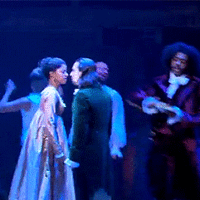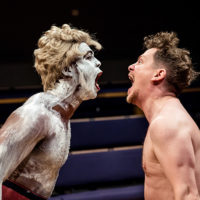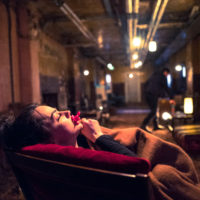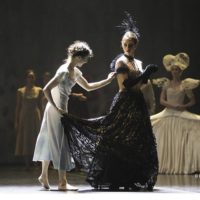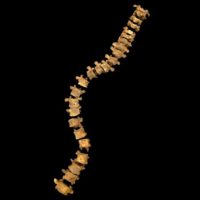The best scene in any play in London right now (don’t argue, I’m not listening) opens the second act in John by Annie Baker. Three women – Mertis, who runs a guesthouse in Gettysburg, Pennsylvania; her close friend Genevieve; and the much younger Jenny, who is staying at the guesthouse with her boyfriend – discuss the interior life of dolls. Jenny: When I was little I was always worried about … [Read more...]
Propwatch: the letters in Hamilton
For a show that might reshape the musical for the 21st century, there’s an awful lot of paper in Hamilton. The stage is a flurry of letters, ledgers, leaves and broadsides – it’s almost antiquated. Hamilton has sui generis swagger and the sound of something new, but it’s a story about what is written, what is read. It’s a show built on pen scratching furiously over paper. In 2009, Lin-Manuel … [Read more...]
Propwatch: the ironing board in Trouble in Mind
The ironing board has an iconic status in the history of British theatre. What became known as kitchen-sink drama was more properly ironing-board drama. In 1956, the originality of John Osborne’s Look Back in Anger was not its frustrated hero mouthing off at an unhappy woman – so far, so drama – but that the central characters were a working-class man with strong views on Suez and a woman who, … [Read more...]
Propwatch – all the stuff in Hir
‘No good ever came from things.’ This line from Hir by Taylor Mac is guaranteed to strike fear into propwatchers. For what is this series but an act of devotion to the innate goodness of things, to the conviction that you can crack open a production via the portable stuff on stage? A prop is where stage illusion meets the material world. However fantastical the production, a prop – a real … [Read more...]
Propwatch: the facepaint pots in An Octoroon
There are knives and flames and even a tomahawk in An Octoroon. But the most hazardous, incendiary objects are three small pots of make-up. Branden Jacobs-Jenkins’ delirious date with an antebellum melodrama from 1859 brings the theatrical politics of two ages into collision. It’s about finding the frisson in antiquated material – and it turns out there’s no quicker way to do that than a thick … [Read more...]
Propwatch: the watches in Hamlet
‘You’re back again?’ said the friend-of-a-friend usher at the Almeida when I arrived for Hamlet. She was mistaken. The insanely awaited production starring Andrew Scott is so very sold-out that buying even one ticket felt like a triumph. And, at nigh-on four hours, I was sure once would be fine. Nah-uh: Scott’s performance and Robert Icke’s production are a blanket of revelation. I arrived … [Read more...]
Propwatch: the dummy in The Pitchfork Disney
Philip Ridley is that rare writer whose work alternately snares decadent adult and innocent child. PG to certificate 18 with nothing in between. Poisoned fairytales, gangland raptures, quests for the hungry heart and avid imagination. The Pitchfork Disney (1991) is an early Ridley play that marks his territory with alleycat assurance. Adult orphan twins, Presley and Haley (George Bagley and … [Read more...]
Propwatch: the lace in Giselle
It’s only a moment. Giselle, a migrant seamstress made rootless by a changing world, confronts the dauntingly affluent Bathilde. Their encounter ripples with instinctive distrust (unwittingly, each loves the same guy; this is ballet). Bathilde wears sumptuous black, plume-topped and lace-swathed. Giselle is in faded blue (washed out and washed again) – but she won’t simper, won’t sink in … [Read more...]
Propwatch: the whisky glasses in The Red Barn and No Man’s Land
The past is another country: they drink things differently there. After the gin-marinated 1950s of John Osborne’s The Entertainer, this week I hit the whisky: in the 1960s Connecticut of The Red Barn and then with the 1970s Hampstead topers in Pinter’s No Man’s Land. Gin, in Osborne’s play, is predominantly a woman’s tipple: mother’s ruin, and the ruin of Archie’s maudlin wife Phoebe, loosening … [Read more...]
Propwatch: Richard III’s spine
When archaeologists excavating a Leicestershire car park in 2013 uncovered a battle-scarred skeleton, the emergence of its severely curved spine was the first strong indication that these were the remains of Richard III: England’s most notorious monarch, Shakespeare’s irredeemable villain. Further research and DNA testing supported the archaeologists’ theory: hitting a nerve at the juncture of … [Read more...]


